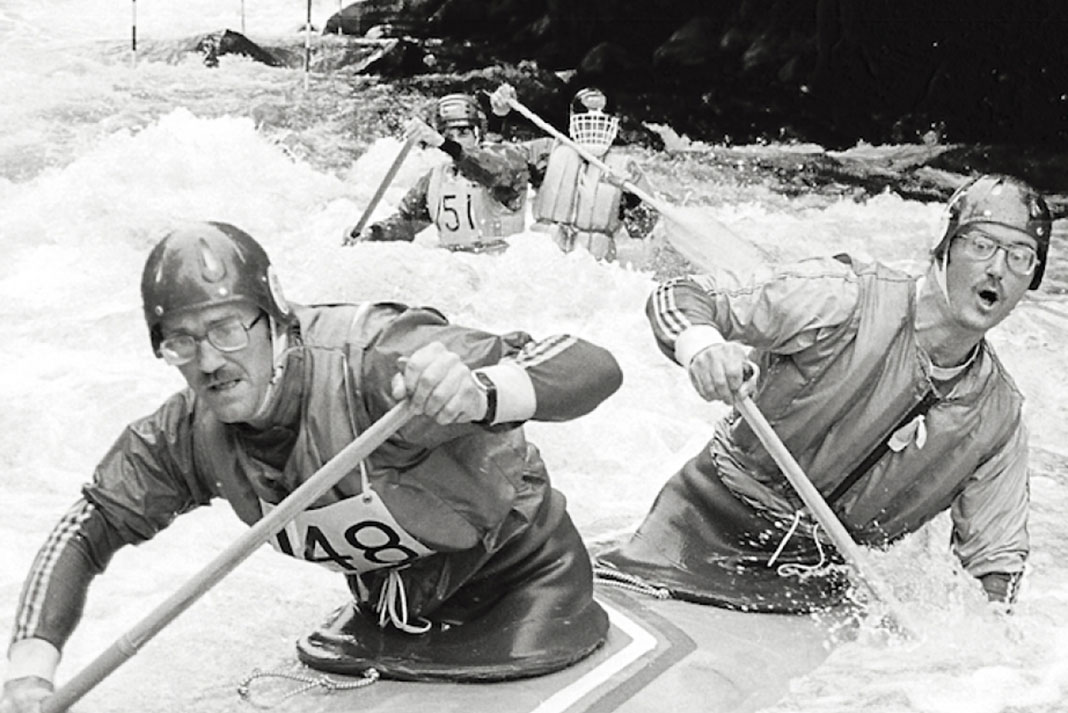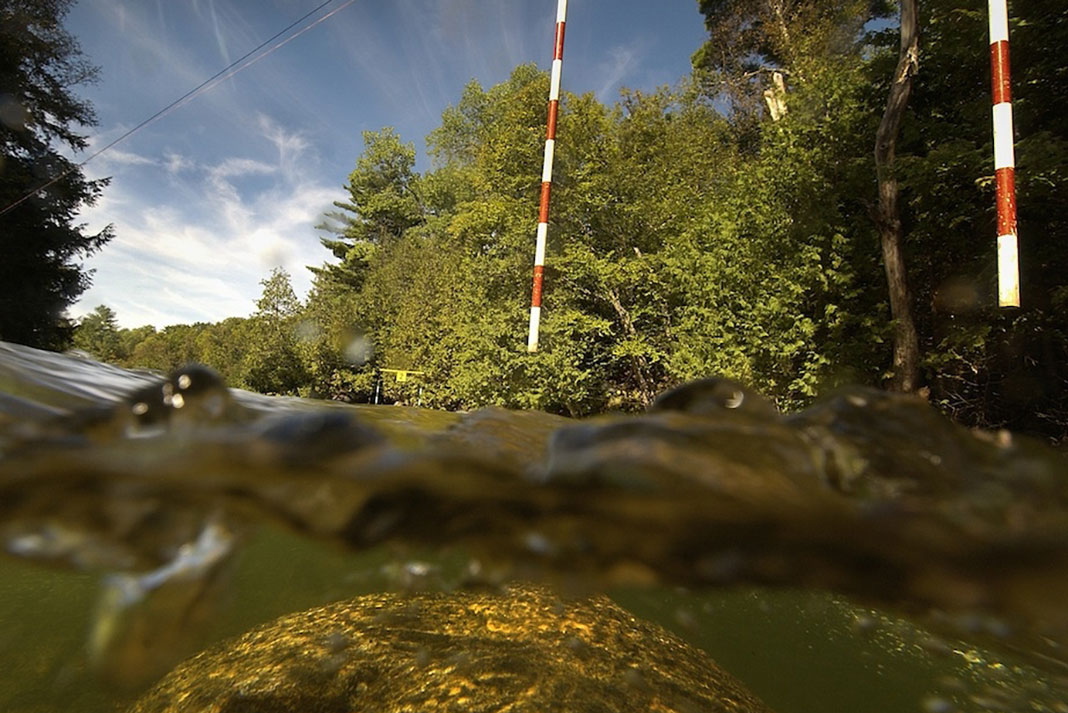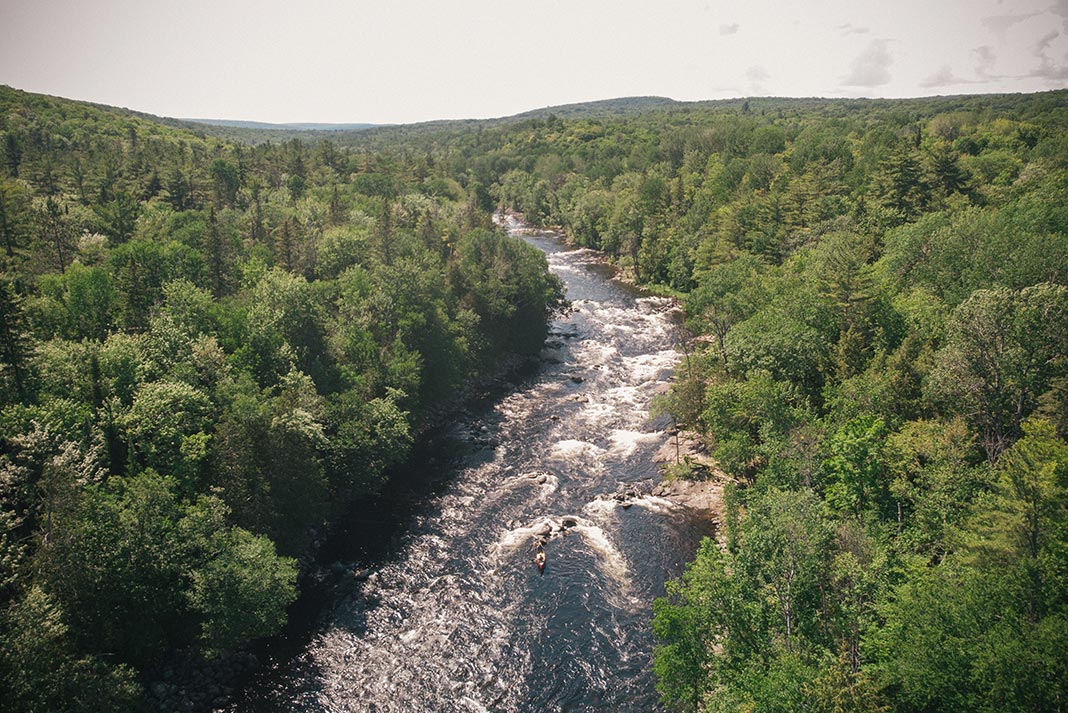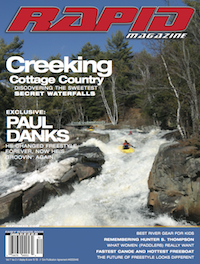As paddlers we are proud of our stories—epic highwater runs, bold moves, long swims. Many of our best stories persist and are retold until they are legends.
Other paddling stories are just the opposite: they are so mundane they do not warrant repeating—at least not at the time—and so the stories and people seem to be forgotten.
Looking closely, however, one can see that the story is not forgotten, but in fact is so deeply ingrained in the fabric of a paddling scene that it goes almost unnoticed. These aren’t climactic legends, but fundamental building blocks, people and places like Roger Parsons, Heinz Poenn and the Minden Wildwater Preserve.
Celebrating the Gull River’s strong undercurrents in Canadian whitewater
A young mountain climber named Heinz Poenn arrived in Canada from Germany in 1956 in search of adventure. After finding no mountains to climb in Ontario, he happened upon a Klepper folding kayak, taught himself to paddle, and found another paddling pioneer named Roger Parsons. The two of them organized a kayak race. The year was 1958, and the Credit River played host to Canada’s second-ever kayak event (the Fraser River in B.C. beat them by one season, a downriver race easily won by a visiting European). The rest is history, albeit an unappreciated and forgotten one.
In 1964 Poenn and Parsons decided they wanted to race slalom at the World Championships—big dreams for self-taught fanatics. At the time, Canada had no standing with the international kayak body so they joined the American team.

Poenn gained himself (and Canada) a seat on the International Competition Committee, opening the door for a Canadian team—which included himself—to paddle at the 1972 Olympics in Germany.
“We were way behind!” Poenn laughs. “We had only started into something that had a long competitive history over there.”
Returning from the Olympics, he and Parsons started talking about a training centre. They already paddled at the then-mild rapids on the Gull River in Minden, Ontario, close to Parsons’ cottage, and they saw potential for something greater.
“Being on the technical committee, I had detailed plans from the Augsberg slalom course [built for the Olympics and still in use on the World Cup circuit],” says Poenn. “We asked Ontario’s Ministry of Lands and Forests to change the river. They agreed, so we hired a backhoe and bulldozer and started moving rocks.”
From obscure river to whitewater destination
Originally, only the lower section of the river was paddled, below the falls, because the upper section below the dam was wide and shallow. Poenn and Parsons coordinated pinching the river, deepening the channel, solidifying the eddies and making a world-class slalom river.
“I was the only one to run the falls,” remembers Poenn. “They were considered too steep and shallow to be safe, so we got some locals who knew how to use dynamite, drilled some holes, and blew the edge off it.”
“Eventually land was acquired on the left riverbank for the now-famous campground. “The whole idea was for Minden to be a place for the paddling community to meet,” says Poenn who continued on to coach national teams, teaching a generation of top paddlers which included Gary Barton, David Ford, Claudia Van Wijk and Poenn’s son, Dieter.
“There was no fixed place for paddlers at the time,” Dieter Poenn recalls of his days as a junior racer. “But this developed into a perfect training site. We could build confidence on the lower section and work our way up. The river is still comparable to anything I raced on in Europe.” Dieter Poenn went on to race with Canada’s National Slalom Team, he eventually took on the role of high performance director.
Claudia Van Wijk, a former world cup paddler who now owns Madawaska Kanu Centre, recalls: “I used to live there for weeks on end. It’s one of the few places where you can drop in at anytime and find people to paddle with. It’s dam-controlled so it always has water, it’s close to Toronto and it’s still as technically challenging as any slalom course in Europe. Really, Ontario’s three destination rivers are Minden, the Ottawa and Palmer Rapids.”
The Minden Wildwater Preserve is a story without an end. The river has undergone continuous improvements. People still arrive from all over, make friends and paddle. Beginners tip over in the run out at the bottom, and the top offers snappy moves that approach class IV. Running the dam is enough to scare anyone. The river is so deeply ingrained in the thoughts of the paddling community it has helped sustain that it sometimes goes unnoticed. To many paddlers, Minden is the Ontario paddling scene.
All this, from simple 1960s dreams of having a place to paddle.
Jeff Jackson is a professor of the outdoor program at Algonquin College in Pembroke, Ont.
The Gull River is so deeply ingrained in the thoughts of the paddling community it has helped sustain that it sometimes goes unnoticed. | Feature photo: Toni Harting





 This article was first published in the Early Summer 2005 issue of Rapid Magazine.
This article was first published in the Early Summer 2005 issue of Rapid Magazine. 